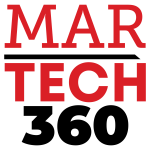Managing a project is a bit like navigating a ship – you’ve got to know where you’re heading and have the right tools for a smooth ride. For any project, having the right tools and software is key to hitting your deadlines and delivering top-notch results.
Using tools in project management makes planning and handling projects a breeze. They work for any project, no matter the field or industry. And when you pair them up with project management software, you not only save time but also cut down on costs.
Let’s explore the world of tools used in project management along with its several aspects.
What are Tools in Project Management?
Project management tools are specifically created to aid knowledgeable individuals or teams in effectively managing their projects and tasks. The phrase “PM tools” typically denotes project management software that can be either bought or utilized for free on the Internet.
In today’s fast-paced corporate world, effective project management is crucial for organizational success. It involves coordinating resources through planning and organizing to achieve specific goals within set timelines. However, manual handling can be time-consuming and error-prone. That’s where project management software comes in, providing a range of features and capabilities to streamline the process.
In What Ways Tools in Project Management Can Improve Operations?

So team leaders and project managers across the globe have shifted to leveraging productivity tools to manage and increase the productivity of their teams. Let’s have a look at what exactly these tools achieve and how project managers benefit from them.
1. Simplified Workflow and Reporting
Productivity tools allow managers to pin all their tasks in a simple format and track their progress. Moreover, the task page acts as a constant reminder and prevents us from getting sidetracked. It also allows for strategizing and planning tasks ahead of time to ensure higher productivity.
Such all-in-one tools allow project managers to understand and analyze productivity while also getting output figures. This also allows for tracking the workflow and analyzing which specific tasks need attention.
Also Read: YouTube Affiliate Marketing: Unlock Your Business Potential in 2023
2. Time Management and Accountability
Several features allow for the inclusion of comments on tasks, organization of dashboards, assignment of tasks, as well as approvals and proofing. GanttPRO and actiTIME are two tools that can help you estimate task times and keep track of project costs. One can also add comments and attachments to any project work, as well as receive real-time notifications about any changes.
Every activity is made easier with these workplace productivity solutions, from managing project teams to estimating costs and budgeting resources.
3.Data Security and Tracking
When a team or project manager is working on several projects, mistakes happen, and some files may go lost with no way to recover them. To avoid such blunders, project management software includes features such as file storage, versioning, and editing, all of which can save you from critical mistakes.
It also streamlines the auditing process, allowing project managers to conduct and/or repeat key tasks including project cost estimation and justifying requests for more funding, members, and extensions.
4. Quality monitoring
For every company to achieve long-term success, it is vital to keep track of work progress. Tracking project stages and determining whether or not projects will be completed on schedule requires specialized tools. Daily timesheets are used to do this, and they are directly entered into the reporting system. By using tools in project management, firms can make the best decisions because all of the information is in one location. As a result, the method is more precise and better.
5. Remote working and communication
In today’s technologically advanced environment, working professionals require a project management tool that they can use on the go. Team members must cooperate and share information and files even when they are traveling or on the go.
Modern organizations have a variety of options for communicating with clients and coworkers, ranging from audio conferencing to video chat. Bringing all of your multimedia communication tools together and experiencing the benefits of Unified Communication as a Service (UCaaS) has become the norm.
Which Tools Are Used In Project Management?
- Gantt Charts: These versatile tools assist in project planning, scheduling, and tracking. They offer a visual representation of project tasks, timelines, and dependencies.
- Critical Path Method (CPM): CPM is employed to identify the critical path of a project, which comprises the tasks that must be completed on time to maintain the project’s schedule.
- Work Breakdown Structure (WBS): A WBS is a hierarchical breakdown of project tasks, subtasks, and deliverables. It aids in the organization and comprehension of the scope of work.
- Mind Maps: These visual diagrams aid in brainstorming and organizing project ideas, tasks, and the relationships between different elements.
- Kanban Boards: Kanban boards are visual aids for managing and monitoring task progress. They utilize columns and cards to represent various stages of work.
- Project Management Software: These platforms provide comprehensive support for planning, scheduling, collaboration, and tracking project progress. Examples include tools in project management like Monday.com, Zoho Projects, and ClickUp.
- Communication and Collaboration Tools: Tools like Slack, Microsoft Teams, and Trello facilitate communication and collaboration among project team members. They enable real-time updates, file sharing, and discussions.
- Risk Management Tools: These tools assist in identifying, assessing, and mitigating project risks. They aid in creating risk registers, conducting risk analysis, and developing risk response plans.
- Resource Management Tools: These tools help in allocating and managing project resources, such as personnel, equipment, and materials. They optimize resource utilization and track availability.
- Document Management Tools: Platforms like Google Drive or SharePoint assist in organizing and sharing project-related documents. They ensure version control and easy access for team members.
Wrapping Up
The array of tools used in project management serves as an indispensable resource for modern-day project managers. These tools in project management empower teams to plan, organize, and execute projects with precision and efficiency. From Gantt charts that provide a visual roadmap to collaborative platforms like Slack and Trello that facilitate seamless communication, each tool plays a unique role in ensuring project success. Additionally, with the integration of project management software, the potential for enhanced productivity and cost-effectiveness is boundless. As the landscape of project management continues to evolve, staying well-versed in these tools will undoubtedly be a key factor in achieving project triumphs.

